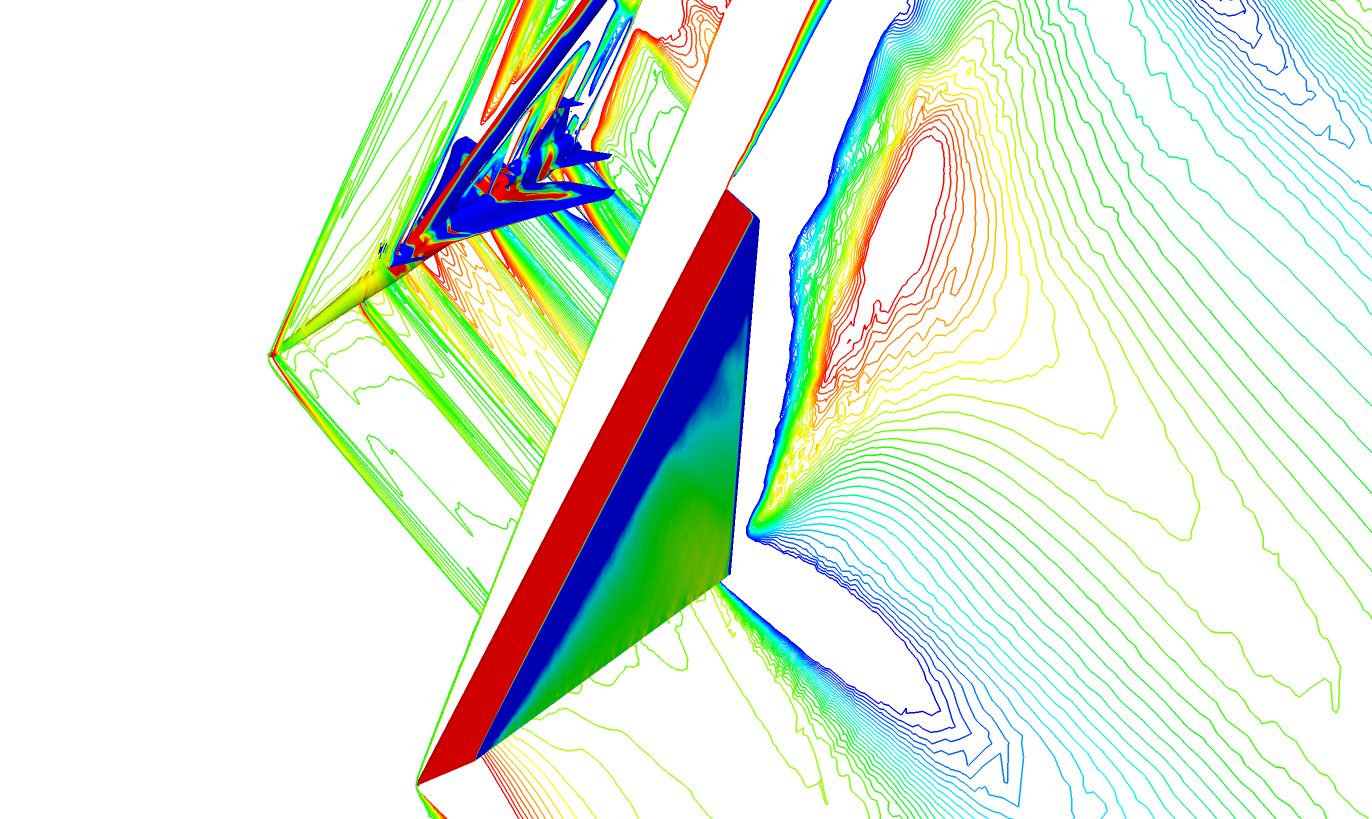Research and development for system integration of silent supersonic airplane technologies
JAXA Supercomputer System Annual Report February 2022-January 2023
Report Number: R22EA3800
Subject Category: Aeronautical Technology
- Responsible Representative: Yoshikazu Makino, Aviation Technology Directorate, Silence Supersonic Aircraft Team
- Contact Information: Hiroaki Ishikawa(ishikawa.hiroaki2@jaxa.jp)
- Members: Junichi Akatsuka, Hiroaki Ishikawa, Shinya Koganezawa, Masashi Kanamori, Satoshi Kondo, Ryo Shimada, Yoshikazu Makino, Hajime Miki, Yusuke Naka, Hisato Takeda, Atsushi Ueno, Tatsunori Yuhara, Rei Yamashita
Abstract
It is important to acquire world-class high level technology in order to enhance the international competitiveness of Japan’s aircraft manufacturing industry, especially for supersonic transport. In addition, the advantage is great, such as revitalizing economic activities from the business and tourism aspects by shortening the travel time of supersonic flight, and the health aspects of passengers such as suppression of economy class syndrome. Based on this, the purpose of this project is to acquire the key technologies required to realize a “quiet supersonic aircraft” and contribute to the development of the aircraft manufacturing industry and air transport in the future. In this project, R&D on sonic boom estimation, measurement and evaluation technologies will contribute to the formulation of international standards at ICAO required for over land supersonic flight. The integrated design technology that simultaneously satisfies both low boom, low drag, low noise and weight reduction are developed to present a concept of a supersonic transport that simultaneously satisfies these technical goals.
Reference URL
Please refer to ‘Silent supersonic transport technologies | Sky Green+ | Research & Development | Aviation Technology Directorate‘.
Reasons and benefits of using JAXA Supercomputer System
To develop a future supersonic transport that satisfies the requirement of low sonic-boom and low aerodynamic drag, it is necessary to estimate aerodynamic properties and sonic-boom properties by accurate numerical simulation. JSS is used to estimate aerodynamic performances of various configurations with high accuracy and high efficiency for the designing of the low-boom supersonic transport.
Achievements of the Year
It is of great importance to analyze the pressure field near the aircraft with high accuracy for sonic boom simulation. It was performed CFD analysis (Fig.2) to validate the results of the NASA X-59 wind tunnel test conducted in JAXA’s Transonic Wind Tunnel (Fig.1). The results showed very good agreement with the wind tunnel test results. By analyzing the CFD analysis results in detail, it was able to clarify the mechanism of sonic boom and obtain analytical results that contribute to the improvement of wind tunnel testing techniques. In addition, a CFD workshop was held in the framework of the NASA-Boeing-JAXA trilateral collaboration, and good agreement was shown with other CFD solvers, confirming the high accuracy of the near-field pressure estimation technique. Details of this CFD workshop for NASA X-59 will be reported at AIAA AVIATION 2023.
Publications
– Peer-reviewed papers
Yamashita, R. and Makino, Y., “Ground Effects on Mach cutoff Phenomenon of Sonic Boom, ” AIAA Journal. https://doi.org/10.2514/1.J062079
Yamashita, R. and Makino, Y., “Mach Cutoff Phenomenon of Sonic Boom in Temperature Inversion Layers,” Physics of Fluids (accepted).
– Non peer-reviewed papers
Junichi Akatsuka, Kei Wada and Tatsuya Ishii “Experimental and Numerical Investigation of Nozzle Shape to Enhance Jet Noise Shielding Effect”,AIAA 2022-2825,28th AIAA/CEAS Aeroacoustics 2022 Conference June 14-17, 2022, Southampton, UK
– Oral Presentations
Yamashita, R. and Makino, Y., “Ground Effects on Mach Cutoff Phenomena of Sonic Boom, ” AIAA AVIATION 2022 Forum. https://doi.org/10.2514/6.2022-3386
Yamashita, R. and Makino, Y., “Mach Cutoff Behavior of Sonic Boom in Temperature Inversion Layers,” APISAT2022, S59-2.
Usage of JSS
Computational Information
- Process Parallelization Methods: MPI
- Thread Parallelization Methods: Automatic Parallelization
- Number of Processes: 960 – 3840
- Elapsed Time per Case: 10 Hour(s)
JSS3 Resources Used
Fraction of Usage in Total Resources*1(%): 1.59
Details
Please refer to System Configuration of JSS3 for the system configuration and major specifications of JSS3.
| System Name | CPU Resources Used(Core x Hours) | Fraction of Usage*2(%) |
|---|---|---|
| TOKI-SORA | 33897132.84 | 1.48 |
| TOKI-ST | 328699.82 | 0.33 |
| TOKI-GP | 382759.47 | 16.28 |
| TOKI-XM | 19938.26 | 12.47 |
| TOKI-LM | 93924.72 | 6.29 |
| TOKI-TST | 0.00 | 0.00 |
| TOKI-TGP | 0.00 | 0.00 |
| TOKI-TLM | 0.00 | 0.00 |
| File System Name | Storage Assigned(GiB) | Fraction of Usage*2(%) |
|---|---|---|
| /home | 546.67 | 0.50 |
| /data and /data2 | 28034.00 | 0.22 |
| /ssd | 303.33 | 0.04 |
| Archiver Name | Storage Used(TiB) | Fraction of Usage*2(%) |
|---|---|---|
| J-SPACE | 17.41 | 0.08 |
*1: Fraction of Usage in Total Resources: Weighted average of three resource types (Computing, File System, and Archiver).
*2: Fraction of Usage:Percentage of usage relative to each resource used in one year.
ISV Software Licenses Used
| ISV Software Licenses Used(Hours) | Fraction of Usage*2(%) | |
|---|---|---|
| ISV Software Licenses(Total) | 6497.12 | 4.52 |
*2: Fraction of Usage:Percentage of usage relative to each resource used in one year.
JAXA Supercomputer System Annual Report February 2022-January 2023




